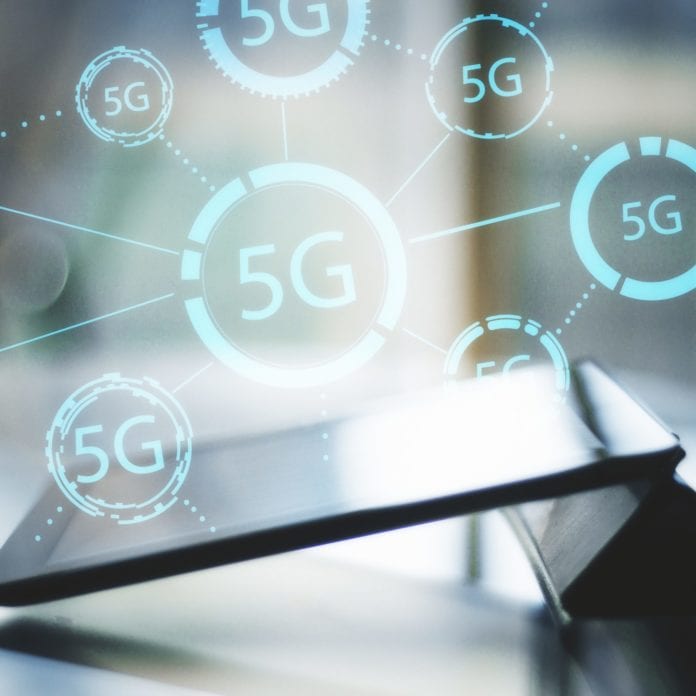The smartphone market is in the midst of a significant slowdown, as consumers hold onto their existing devices longer in the absence of operator subsidies and smartphone prices that have broken into four-figure territory, without much in the way of fresh design ideas. In their most recent quarterly results, both Verizon and AT&T reported that the device upgrade rate for their customer case had hit all-time lows.
Will the transition to 5G be a technology jump that also jumpstarts new growth in the smartphone market?
“The biggest question that remains unanswered is what will bring the smartphone industry back to growth,” said Ryan Reith, program VP with IDC’s Worldwide Mobile Device Trackers, in a statement when the most recent report was released in March. “There is no question industry growth has been down for reasons that have already been identified … but it is shortsighted to overlook the possibilities of some important technology advancements that are within reach, with 5G probably being the most significant.”
Here are four industry predictions for the 5G device market:
-IDC expects smartphone shipments to continue their downward trend this year — but 2019 could end up being a turning point. 2019, according to the firm, is “expected to witness a new high for technological innovation with the introduction of foldable devices and 5G smartphones. … While use cases for upgrading to a 5G device/service remain unclear, it is evident that after 2019 the adoption will begin to attain significant numbers,” the analyst firm said. IDC expects that there will be about 6.7 million 5G devices shipped this year, out of a total of nearly 1.4 billion devices; but by 2023, the firm predicts, 5G smartphones will account for about one out of every four smartphones shipped globally.
-CCS Insights said that in the face of challenging market conditions, smartphone makers “are pinning their hopes on 5G devices.”
The analyst firm said recently that it expects shipments of 5G devices “to get off to a slower start than previously anticipated,” but with an “encouraging growth trajectory from 2020 and beyond.”
“History has shown that the introduction of a new ‘G’ always helps to energize demand for new phones, and 5G will be no exception,” said Marina Koytcheva, CCS Insight’s vice president of forecasting, in a statement.
CCS Insight expects 220 million 5G phones will be sold in 2020, rising to 930 million in 2023 and accounting for nearly half of all mobile phone sales by that point. Beyond smartphones, though, CCS Insights anticipates that there will be more than 1 billion 5G connections by 2022 — with 5G hitting that milestone a year faster than 4G did.
-Deloitte expects about 20 handset vendors to launch 5G-ready devices this year, with about 1 million 5G handsets to be sold this year out of a projected market of about 1.5 billion smartphones; Deloitte expects 1 million 5G hot spots to be sold and around 1 million 5G fixed wireless access devices to be installed. By the end of 2020, the firm predicted, 5G smartphones will make up about 1% of all smartphone sales, or about 15-20 million units; the firm has pegged 2021 as the year when 5G smartphone sales take off, with sales of more than 100 million 5G smartphones.
-Ericsson took a high-level look at 5G device expectations in its most recent mobility report, forecasting that there will be “a strong lineup for [the second quarter] of 2019.” Second-generation 5G chipsets are expected by the end of this year, the infrastructure company noted, which will enable 5G devices with “enhanced architectures and lower power consumption.
“Clearly 5G is at the front of everyone’s mind – but it should also be remembered that this is just the beginning of a major technology shift, with many challenges ahead,” Ericsson said, going on to add that on the device front, the rapid global development of 5G means that vendors “need to work on three non-standalone 5G variants almost concurrently: TDD for mmWave, TDD for mid-band and FDD for low band. Standalone 5G is also starting to emerge. Compared to the introduction of LTE, the scope of 5G technical variants is much wider.
“Power consumption, antenna technology and Additional Maximum Power Reduction (A-MPR) are all more challenging for mmWave compared to mid- and low-band devices,” Ericsson said.
Looking for more insights on 5G devices? Keep an eye out for the upcoming RCR Wireless News special report on Getting 5G Devices to Market, to be published May 22, and register for our webinar the same day.

